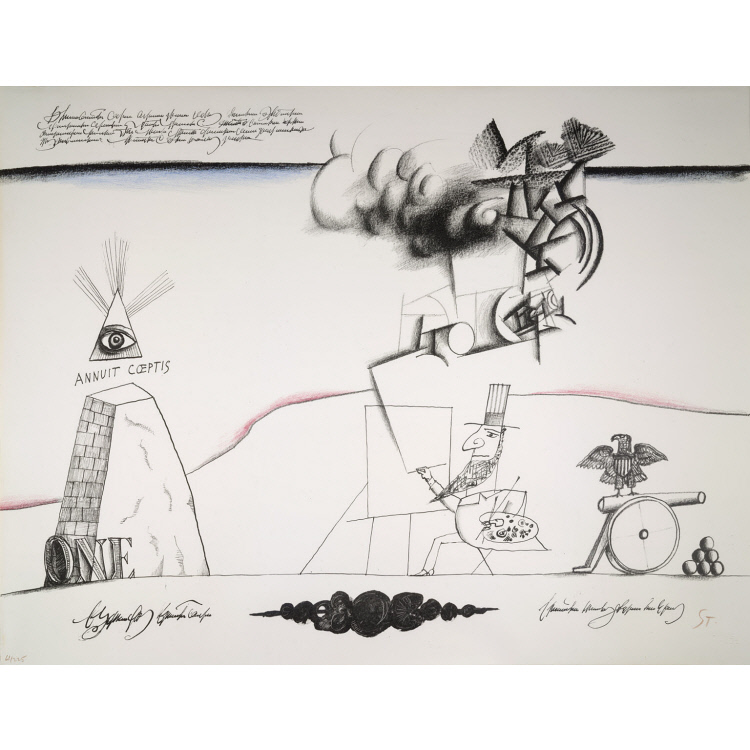Saul Steinberg
A draughftsman who does watercolors, collages, assemblages, and oil paintings, Saul Steinberg is best known as the New Yorker cartoonist whose fanciful people and animals uncannily capture the masquerades of modern life. Using a cast of characters and elements that includes cats, crocodiles, letters and punctuation marks, architectural monuments, and household equipment, Steinberg finds riddles more truthful than answers. Masked by the wit of his visual and verbal puns is social comment; Steinberg considers himself a "writer in line" and calls drawing a way of "reasoning on paper." He continually questions the nature of people and things and uses his cartoons t0 meditate on a limitless range of issues. Steinberg studied for a year at the University of Bucharest, but in 1933 transferred to the architectural school at the Polytechnic University in Milan. In 1936 he began publishing cartoons in an Italian humor magazine, and soon after receiving his architecture degree in 1940, Steinberg was publishing regularly in the New Yorker. The following year he immigrated to the United States and during World War II served in the U. S. Navy.
Virginia M. Mecklenburg Modern American Realism: The Sara Roby Foundation Collection (Washington, D.C.: Smithsonian Institution Press for the National Museum of American Art, 1987










































